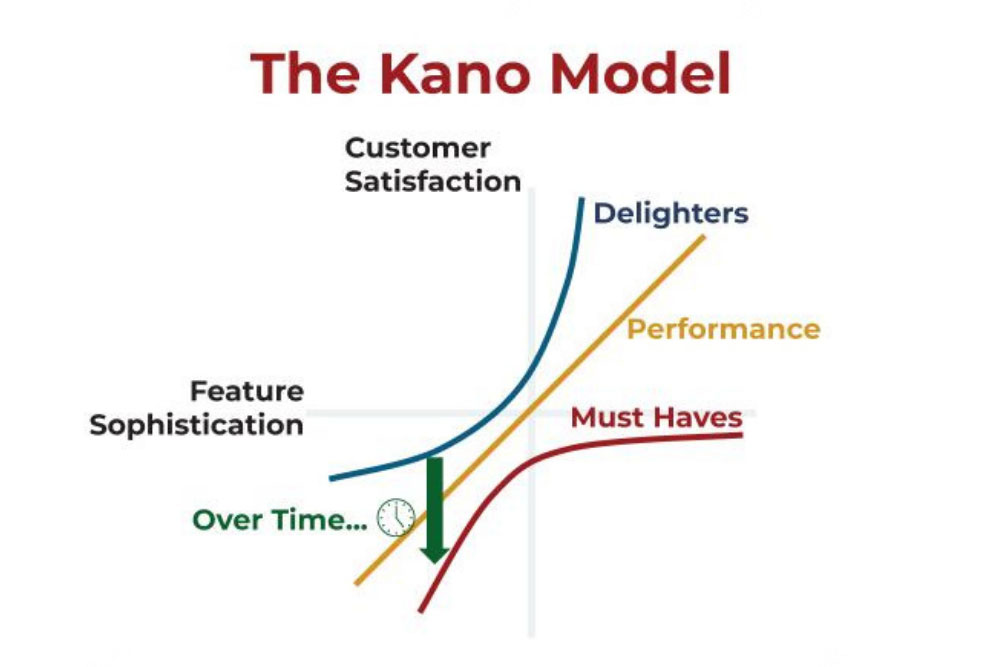I had a training session at a resort in Ahmedabad, standing in the lobby trying with all my might to connect with my co-trainer, and my phone was adamant to pick up any signal at all. I was mortified at the moment when the nearby usher patted my back and offered his phone to make the call, and he was kind enough to dial the number for me.
When I called the room service, they greeted me politely, “Good evening, Mr. Jain.” The moment I entered the room after a long day, it was impeccable, and I felt comfortable. I received a handwritten thank you note from the clerk for choosing the resort and wishing me safe travels.
Regardless to say, the immaculate service painted a smile on my face. I thought to myself if I visit Ahmedabad with my family, I will definitely beat the path to this resort. The beyond reproach service and welcoming gestures were worth the stay.
My experience with the resort provides an outstanding opportunity to examine it through the lens of the “Kano Model of customer satisfaction.” The Kano Method has a long history, dating back to 1984 when it was developed by Japanese Professor Noriaki Kano of the Tokyo University of Science.
The Kano model plays a vital role in identifying the product or service attributes to deliver an exemplary customer experience.
Professor Kano was persuaded that a product or service is about far more than just functionality. After all, not every feature added to a product has the same, or, effect on a customer’s satisfaction. The model is used in understanding and contemplating customer needs thoroughly. Businesses can factor customer needs in their product designs and modifications by understanding their different types.
Customer Satisfaction And Kano Model

Making customers happy is as challenging as finding a needle in the haystack. Whether you’re selling a product or a service, a variety of factors influence whether your customers smile or grumble. You can get a differentiated view of your product or service’s characteristics using the Kano model.
While some features are expected by customers, others distinguish a product from the crowd. The Kano model assists you in identifying those by focusing on attractive and performance characteristics. As a result, product developers can quickly identify the unique selling points that greatly increase customer satisfaction.
What Is The Kano Model?

It is now widely acknowledged that retaining existing customers is more profitable than attracting new ones. Several studies reveal that customer loyalty is directly proportional to the customer’s perception of the quality of the goods or services offered (Sirohi et al., 1998; Gorst et al., 1998). One of the most important relationships in marketing theory and practice is the one between customer loyalty and customer satisfaction (Reichheld and Sasser 1990; Fornell 1992; Bolton and Lemon 1999; Anderson et al. 2004). According to existing studies, customer satisfaction is the primary driver of customer loyalty (Reinartz and Kumar 2003).
The bane for businesses is dealing with customer satisfaction. Businesses must answer questions such as, “What products and services can be offered to customers in order to provide a high level of customer satisfaction?” What are the different features and attributes that are most likely to propel customer satisfaction? Among the methods used to answer these questions and analyze customer needs, the Kano model has been widely regarded as an effective tool by industries due to its ease to classify customer needs on the basis of survey data (Kano et al., 1984).
What Are The Different Attributes Of The Kano Model?

The Kano Model of Customer Satisfaction categorizes product attributes based on how customers perceive them and how they affect customer satisfaction. These classifications can help guide design decisions by indicating when it is good enough and when more is better. The model reveals a nonlinear relationship between product performance and customer satisfaction. Product attributes are classified into the following categories by the model:
Performance Attributes
When it comes to directly compare products or services, these attributes play a decisive role. Better fulfillment leads to a linear increase in customer satisfaction, whereas the absence or poor performance of these attributes reduces customer satisfaction. The price a customer is willing to pay for a product is closely related to its performance attributes. For example, I would not have hesitated to pay for the ambiance and freshly prepared made-to-order meals.
Basic Attributes (Must-haves)
These are the attributes that customers expect and thus are the “musts” of a product or service. Improving the performance of these attributes does not guarantee increased customer satisfaction and may only increase product costs. What matters is that the absence or even poor performance of these attributes would result in significant dissatisfaction. For example, a clean and comfortable room in the resort.
Attractive Attributes (Delighters)
Customers do not express these characteristics explicitly and are generally surprised by them. The presence of these characteristics delights the customer and results in a high level of satisfaction. However, the absence of these characteristics does not result in dissatisfaction. The attractive attributes are seen to meet the customers’ latent needs. For example, at the time of check-out, the resort personnel surprised me with a handwritten thank you note. It was the moment, I made up my mind to return to the resort with my family.
Indifferent Attributes
These attributes are neither good nor bad and have no significant effect on customer satisfaction. For example, I did not benefit from the live music program in the lounge as I headed to the airport right after completing my session.
Reverse Attributes
These are the unnecessary attributes that would reduce customer satisfaction with their presence. For example, whenever I was in the lobby I had to listen to the constantly playing instrumental music.
The decay of delight is a key concept in the model; over time, delighters will become performance attributes, and performance attributes will become must-haves. This will inevitably happen with products as new technology becomes prevalent, and it will happen with services once most competitors implement what were once delightful offerings.
When Steve Jobs first unveiled the original iPhone in 2007, it seemed out of this world. Pay attention to the crowd reaction when Jobs demonstrates pinch-to-zoom or when the phone automatically switches to landscape mode when he flips it in his hand. It was incredible. After a few years, there are thousands of smartphone models. Every single one has the pinch-to-zoom feature and automatically switches to landscape mode. You would seriously reconsider purchasing a phone without these features – it would feel strange.

This is a general property of any product or service: amazing new features eventually become basic, expected, and boring attributes. Anyone selling a competitive product must have these features in order to provide a satisfactory user experience.
What Is The Importance Of The Kano Model?

The Kano Model is an effective tool for analyzing customer satisfaction:
- It demonstrates that different types of requirements can exist for products. What do customers expect? What factors contribute to satisfaction? How can businesses set themselves apart? How can you excite both customers and non-customers? What should be overlooked?
- It demonstrates that increasing the number of must-have qualities does not help to differentiate a company or product from competitors.
- One-dimensional qualities have a direct impact on customer satisfaction.
- Attractive qualities are the best way to distinguish yourself from the competition. They are difficult to determine because they are not anticipated by the customer. Furthermore, not all first-to-market harbingers are successful.
- Investing in indifferent attributes is pointless because they have no impact on customer satisfaction.
- Reverse attributes should be avoided because they lead to rejection and a negative company image.
- There is a reverse temporal dynamic at work: basic attributes, such as catering on flights, become excitement attributes.
It is important to note that to use Kano’s methodology correctly, it is essential to seek stability between these factors to achieve the best performance, with the greatest amount of attractive and performance requirements, the correct presence of basic requirements, and the absence of Reverse requirements when possible.
However, it’s important to remember that for the methodology to work, data must be collected and analyzed to determine how customers perceive and anticipate each of the variables described.
https://dmexco.com/stories/kano-model/
https://www.heflo.com/blog/customer-service/kano-model-examples/
https://getthematic.com/insights/the-kano-model-guest-post-by-michael-d-lieberman/
https://www.isme.in/kano-model-of-customer-satisfaction-and-its-importance/
https://blogboard.io/blog/kano-model-how-to-build-great-products-with-a-simple-mental-model/
https://f.hubspotusercontent20.net/hubfs/5088125/Prodify%20Blog%20Header%20Images%20%2818%29-1.png
https://www.netscribes.com/wp-content/uploads/2021/11/customer-satisfaction-survey.jpg
https://www.productplan.com/uploads/2019/06/Kano-model.png
Written By: Jimmy Jain
Edited By: Afreen Fatima
Society of Design Thinking Professionals









